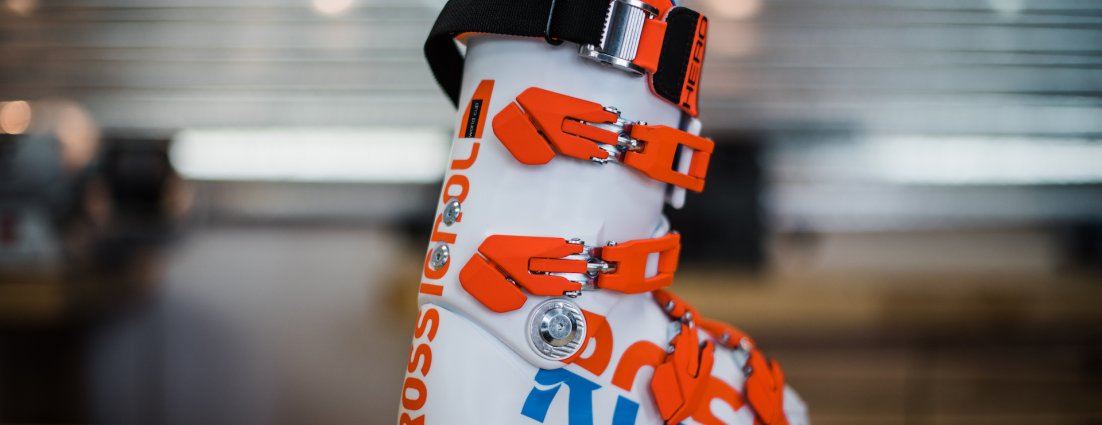Cold Feet About Race Boots?
03.05.2019 | Ski Racing Staff

There are three facts of life about well-performing race boots. First, they need to fit very close to your foot. Second, they are solid blocks of plastic, and third, thin race liners are not much better than a second sock. An inevitable trade-off for those high-performance disco shoes is that they can get cold, and subsequently, your feet inside can get very cold. Some of the myths and misunderstandings reoccurring with each new generation, so although this topic has been discussed in countless forums within the ski world, racers deserve a refresher and maybe some basic tips so you don’t come into the shop in January with frost-bitten, black toes!
1- Critical space in boot
The arteries and veins that circulate out to your extremities and back to your heart have a road map. Where the warm and cold blood travels is worth noting and understanding when getting your boots fit. Without an in-depth anatomy lesson, let’s acknowledge the Achilles/back of ankles as the main channels and the top of your foot as a secondary spread out web of smaller mini rivers. If either of these spots in your boot are exceptionally tight, they will clamp off the hoses and not allow cold blood to return and warm blood to fill your foot and toes. When fitting your boot, be aware of excessive pressure in these spots and fit a few more millimetres of breathing room.
2- Change your lucky socks
For the price of a lunch at Park City Mountain, buy a few socks of your favorite brand and style. Now, after inspection and a few warm-up runs, and before your start number, head into the lodge and change your socks! When we get all suited up, and start to get moving, your body will break a small sweat. Your socks will hold this moisture. When you head back outside and wait for your run, the cold will snap that moisture and lock it up, including your feet in those socks. Because it’s cold, your body wants to protect its vital organs, so it holds most of its warm blood in your head and chest, it will sacrifice your extremities and limit how much blood it sends far away from your heart. If your socks are damp or have lost their fresh feeling, those feet will have one less chance to combat the cold.
3- Proper drying
After long days of skiing, there's almost always some condensation and leftover snowmelt in between liners and shells or under the footbed. Take those things apart and thoroughly air dry overnight! Leaving in or on a locker in a poorly ventilated team room does not even come close. Room temperature boot dryers that blow air work very well, but I’d still recommend taking liners and footbeds out to dry by themselves. Inserting newspaper or paper towels into liners works wonderfully to draw out the moisture in liners and absorb any excess. Please avoid high temp “boot bags”, leaning shells near an open fire, or turning the boot over on a heater vent. Most of the materials of your boot can be altered with heat..especially custom footbeds, therefore any dryer method over, say, 80-ish degrees can ruin a sweet set up.
4- Constant management
Pay attention to your body! One goal to help optimum performance is to stay loose and warm prior to your training block or race run. There are lots of ways to do that of course, but keys to keeping feet happy are- drinking warm fluids before and during exercise (tea, hot chocolate, warm Gatorade). Proper stretching beforehand and always consciously moving your arms and legs. Fun fact: calf raises on a step will act as a pump for the arteries and veins in your lower legs and significantly increase blood flow versus static in-boot fixed stance for prolonged periods. Lastly, the management of buckle pressure. Seems silly to mention, but I’ve heard many kids say they buckle their boots once in the morning, tight, and never touch them all day. If I was to shake your hand and squeeze and not let go, your hand would turn white and start going numb. The same applies to buckle pressure. Yes, we need that locked down, zero-slop feel for active skiing, but in the lift line, on the chair, or prior to skiing, pop those buckles open! Release that handshake every once and a while.
5- Aftermarket products
Let’s face it, there are many cool options to keep us warm. Modern race boot liner materials and sock types have come a long way. Just ask your coaches what they endured in their day. But now, beyond the stock elements, we can add gadgets! Heating elements are available to insert into current footbeds with an external battery and connecting wires as all day heated blankets for your toes. They are admittedly bulky and prone to breaking, but they do the job well. Within the last few years, electric socks have taken over. Thin socks with flexible elements running through the material provides a minimal but appreciated cold shield. Smaller clip-in batteries tuck into the sock, above the boot cuff… easy and lightweight. They are expensive, but universal for any cold-activity footwear. Lastly, and maybe not the most aesthetically pleasing, but those that need the final bit of prevention have gone to neoprene booties that Velcro over the boot shell and stay on while clipped into bindings. Those that I speak to absolutely swear by these to shield all snow and moisture out.
With all this said, cold race boots are a right of passage, and minor foot “issues” become a badge of honor later that proved your commitment to this harsh element sport. But we can also be smarter than some plastic and foam, and get ahead of misery or damage with a bit of preparation and planning.